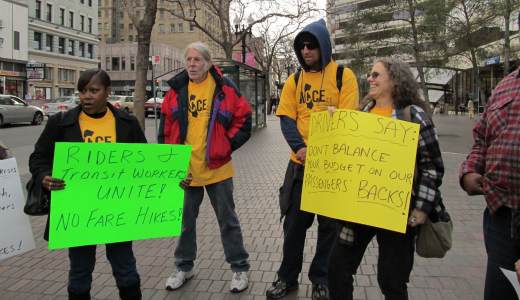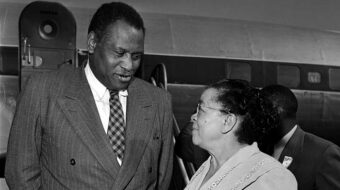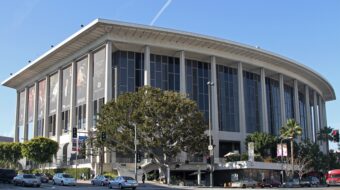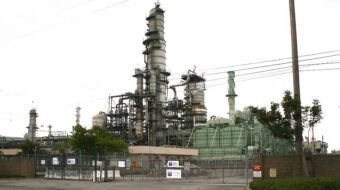
OAKLAND, Calif. – Long and indirect routes, multiple transfers with long waits for each bus, routes that once provided direct, efficient transit now shortened or eliminated – these are the conditions AC Transit bus riders face every day.
Citing a $56 million budget shortfall, AC Transit, which serves a quarter million bus riders daily in Alameda and Contra Costa counties, across the bay from San Francisco, cut services sharply last year. Now its board is considering fare hikes, including possible big increases for youth, disabled people and seniors.
As they prepared to speak at an AC Transit board meeting March 9, bus riders brought together by the Alliance of Californians for Community Empowerment shared their stories.
“We used to have a bus that would bring people right to Pak N Save to do their grocery shopping,” Annie McKinzie told the group. “A lot of seniors now have to walk four blocks with their groceries where they used to go right across the street and get the bus home.
McKinzie said she often helps other seniors with their groceries, adding, “The people sitting in the office need to ride the buses, all the way from downtown to 150th Ave.”
Holly Randolph works nights in San Francisco, and finds her bus “never comes at the same time, it’s always late.” Randolph said transfers are another problem, particularly when it’s necessary to ride two or more buses, with long waits in between. Often, she said, “it’s past two hours, and then I have to pay again.”
The group agreed that in addition to better service, the four-hour, multiuse transfer ACCE is campaigning for would be a very big help.
Besides the riders, bus drivers and other community members spoke during the meeting.
A high school teacher warned that higher fares would affect students’ ability to stay in school. Another community member called for adding “affordability” to the transit board’s criteria for a fare policy. Participants also stressed that most bus riders have low incomes, and many are people of color.
Said a bus driver, “You’re basically talking about a huge increase in what low income families have to pay just to get to work and get their kids to school. You’ve got to stop coming to our union and going to the public, cutting service and raising our fares. Find the money somewhere else!”
But where else, with many public transit systems around the state also facing budget problems?
Graham Brownstein, state policy director with TransForm, which works for world-class public transit and walkable communities in California, said the biggest barrier to funding local transportation systems is “an archaic and entirely car-oriented, new road-oriented funding system.”
In a telephone interview, he noted that for nearly a century, the federal government has been subsidizing a road-based infrastructure that benefits the auto and oil industries, and to some extent, the rubber and cement industries.
The biggest challenge, he said, will be to reform the funding formulas so that instead of over 80 percent going to roads, funds are invested in other systems people need.
“We are not talking about fighting over existing sources of revenue,” Brownstein said. “We’ve got to have a bigger pie.” Among possibilities: fuel taxes or fees, phased in to soften the impact.
In addition, he said, communities and regions need more flexibility to find local resources. Among these could be air quality or carbon fees, or using part of property tax increases that occur when an area is served by efficient public transit.
Despite severe cuts to many other programs, Governor Jerry Brown’s proposed budget has no cuts to transit funding. Brownstein called the governor “very supportive” of public transit.
AC Transit’s board of directors has set April 27 for a public hearing on its fare policy.
Image: Marilyn Bechtel/PW












Comments